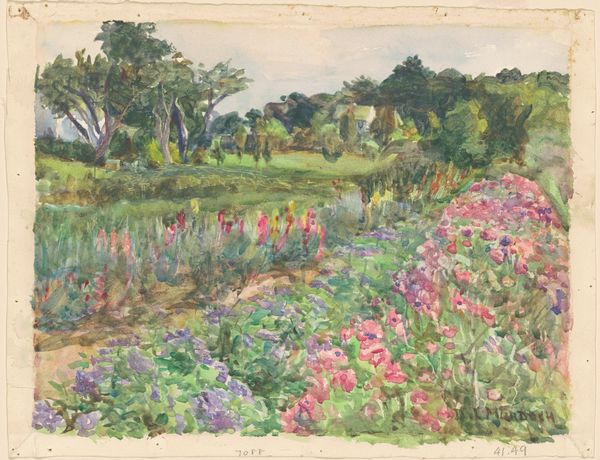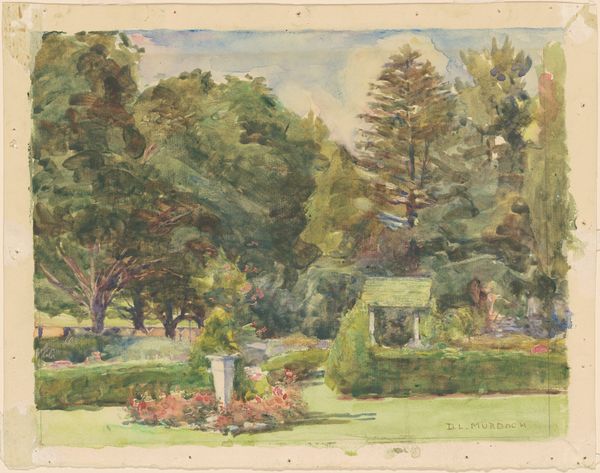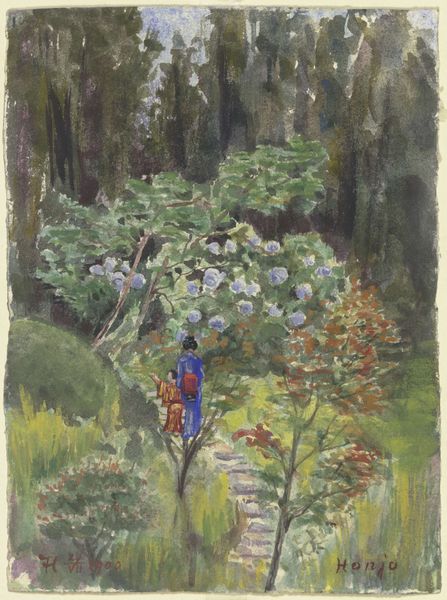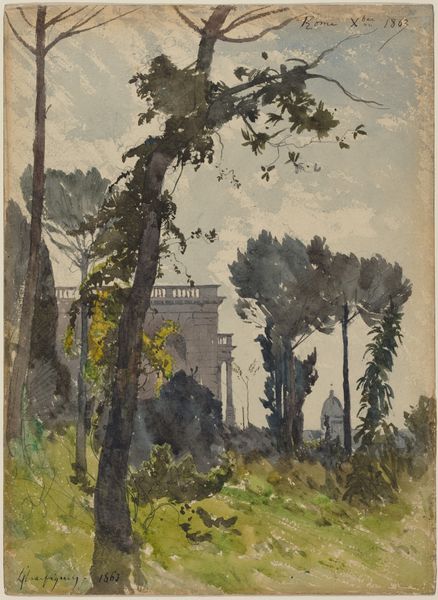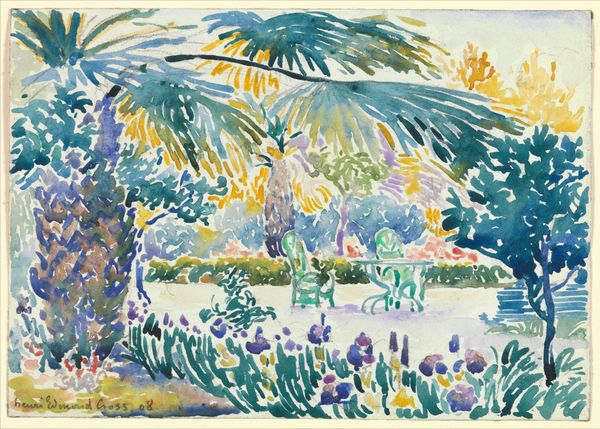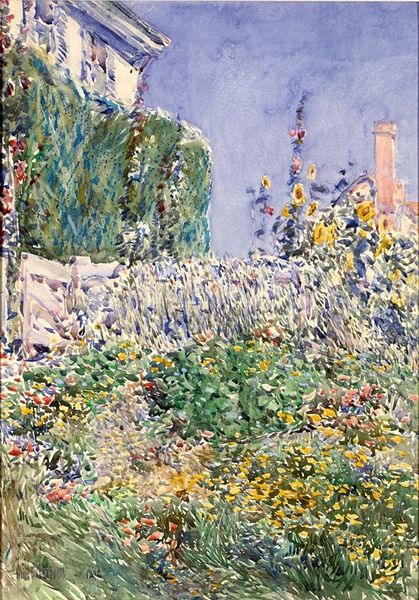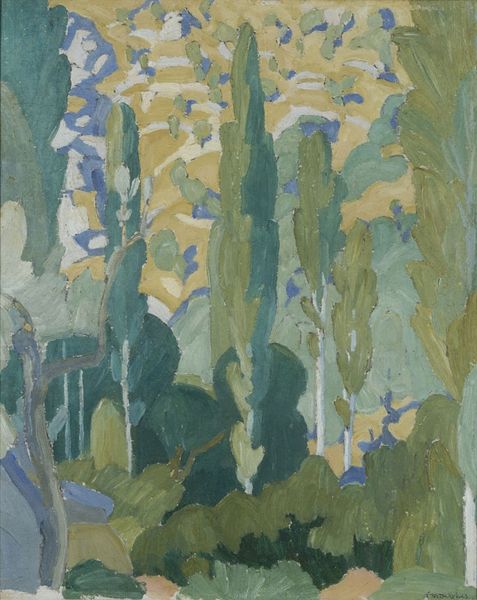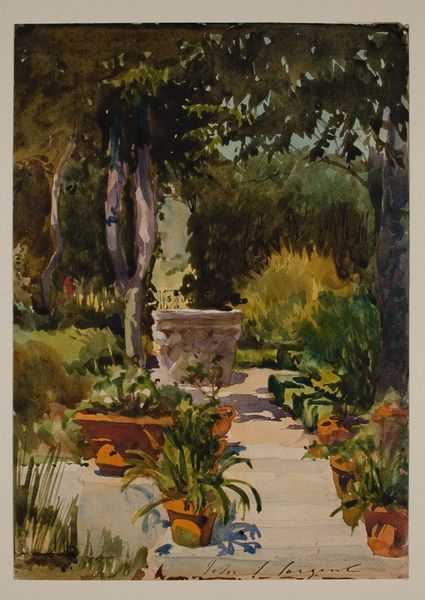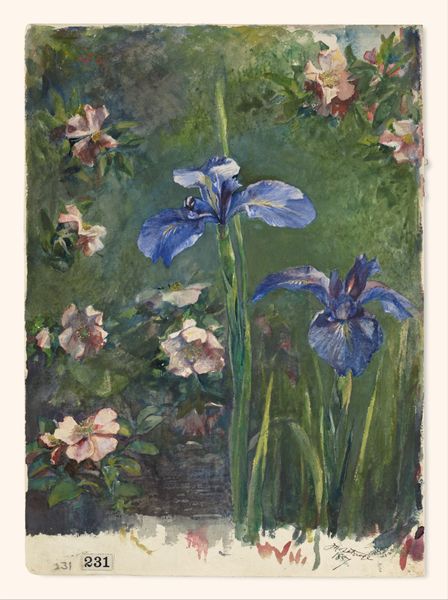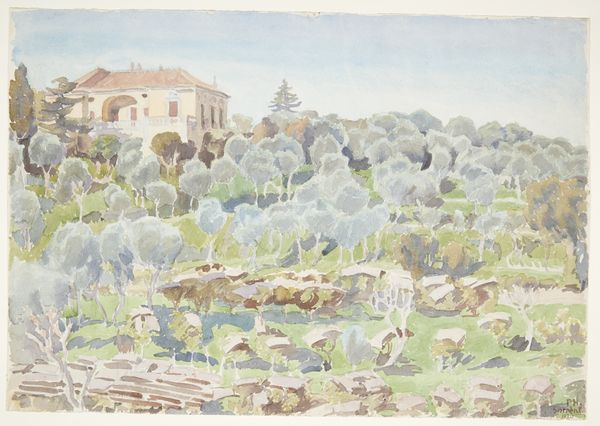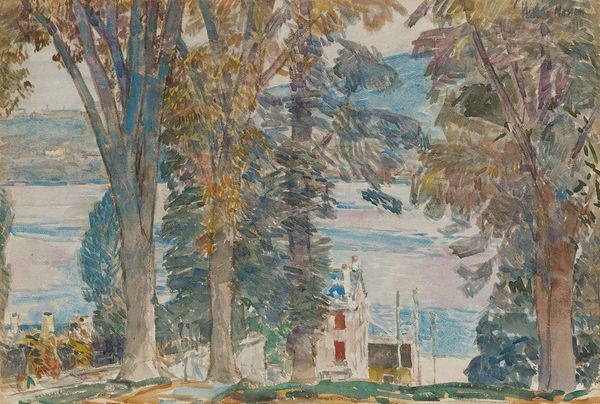
painting, paper
#
painting
#
asian-art
#
landscape
#
paper
#
japonisme
#
watercolour illustration
Copyright: Public Domain
Curator: Look at this artwork by Fritz Hauck, "Partie eines japanischen Gartens", from around 1898 to 1900. It's currently held here at the Städel Museum. Editor: My first impression is of peaceful contemplation, it’s hazy, like looking through a heat shimmer, or remembering a lovely day dream from long ago. It almost invites the viewer to take a stroll there, or at least linger. Curator: Yes, Hauck's work fits into the Japonisme movement quite well. It's watercolor and drawing on paper which was easily available, of course, and favored by impressionists wanting to quickly capture fleeting scenes of life or travel, here obviously Japan. The emphasis on landscape speaks volumes about the artistic fascination with exotic locations. Editor: There's something quite intimate about the artist's focus. Is that an intention with Japonisme and Impressionism in general? Capturing this snippet as it stands in his experience? You sense his own wonder in what he chose to record, as he saw it then. And also with the Impressionist emphasis on representing light and color and motion, right? It's not perfect--look at that lotus leaf in the front... but still there are the real, messy beautiful leaves in nature, even in the tidy idealized Zen-like gardens. Curator: The style certainly conveys this artist's sensibility and an interpretation of reality. Watercolors also enable translucence that mirrors natural ephemerality. Hauck shows a glimpse of leisure. We need to remember these pieces of work aren't disconnected objects but results of production and choices driven by economic possibilities of the time. Hauck had to acquire, prepare and apply these materials; others produced it for him in workshops and mills... So much effort focused and transformed into capturing something quite free of care in terms of its subject. Editor: You put a fine point on things, reminding us of those crucial questions that sometimes seem too vulgar to apply to 'high' art. Even this tender little rendering participates in these historical patterns you have identified. Curator: It does; thinking of all those elements opens a new window into seeing the material circumstances around the art. Editor: Thank you, that brings this work into a new perspective! Curator: Thank you!
Comments
No comments
Be the first to comment and join the conversation on the ultimate creative platform.
